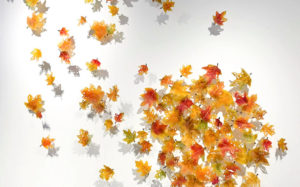
The final phase of artist Jason deCaires Taylor’s monumental project Museo Atlantico, in Lanzarote, Spain is now complete. It was officially inaugurated on the 10th of January 2017 by the President of the island, Pedro San Gines.
Consisting of over 300 works spread over 12 installations, it is the first time Taylor has created large-scale architectural works. The new installations include a spooky 100 ton 30m long wall, an underwater botanical sculpture garden referencing local flora and fauna, and a colossal formation of over 200 life size-human figures in a swirling vortex.
I personally love three of these large scale installations. The first is called Crossing the Rubicon and it consists of 35 figures walking towards an underwater wall. As the artist states, “The wall, which is part industrial, part organic, stretches 30 meters long and 4 meters high and contains a single rectangular doorway at its center. The wall is intended to be a monument to absurdity, a dysfunctional barrier in the middle of a vast fluid, three-dimensional space, which can be bypassed in any direction. It emphasizes that the notions of ownership and territories are irrelevant to the natural world. In times of increasing patriotism and protectionism the wall aims to remind us that we cannot segregate our oceans, air, climate or wildlife as we do our land and possessions. We forget we are all an integral part of a living system at our peril.
“To cross the Rubicon is to pass a point of no return. The work aims to mark 2017 as a pivotal moment, a line in the sand and reminder that our world’s oceans and climate are changing and we need to take urgent action before its too late.”

The second installation I really like is the one called Portal. A hybrid animal/human sculpture looks into a large square mirror, which reflects the moving surface of the ocean. The diver becomes a part of the artwork. It’s intended to portray water within water, an interface or looking glass into another world.
The third last one I enjoyed is The Human Gyre, which consists of over 200 life-size figurative works creating a vast circular formation or gyre. “The artistic installation reminds us that we have evolved from marine life, and are all subject to the movements and will of the ocean,” the artist states. “The piece embodies our naked vulnerability to its inherent power, and our fragility in the face of its cycles and immense force. It provides the oxygen we breathe, it regulates our climate and it provides a vital source of nutrition to millions of people.”












0 comments